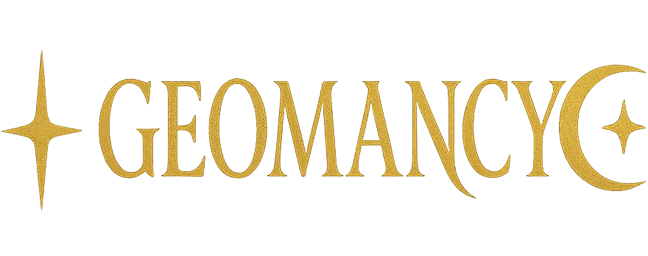What are the Twenty-Four Mountains?
In today’s global trend of pursuing ‘ecological balance’ and ‘sustainable development’, China’s ancient Feng Shui culture provides us with wisdom for harmonious coexistence with nature. Today, let’s explore the core concept of Feng Shui – the ‘Twenty-Four Mountains’.

In traditional Chinese Feng Shui, there is a fundamental concept known as the ‘Twenty-Four Mountains’. Although it sounds complex, the concept is actually quite simple. Imagine dividing a complete 360-degree compass circle into 24 equal parts, each spanning 15 degrees, called a ‘mountain’ or ‘mountain head’. These 24 directional divisions together form the basis for determining the orientation and sitting direction of buildings or spaces.
Professional explanation: The Twenty-Four Mountains divide the 360-degree circle into 24 equal parts, each 15 degrees, corresponding to the Heavenly Stems, Earthly Branches, and four trigrams from traditional Chinese cosmology.
Components of the Twenty-Four Mountains
To effectively use these directions, these twenty-four orientations are assigned specific codes, each representing a more refined type of Five Elements energy. These codes originate from traditional Chinese cosmology – namely the Ten Heavenly Stems, Twelve Earthly Branches, and four trigrams from the Eight Trigrams. The specific composition is as follows:
| Category | Elements | Count | Examples |
|---|---|---|---|
| Ten Heavenly Stems(eight of them) | Jia (甲), Yi (乙), Bing (丙), Ding (丁), , Geng (庚), Xin (辛), Ren (壬), Gui (癸) | 8 | 甲(Jia)、乙(Yi) |
| Twelve Earthly Branches | Zi (子), Chou (丑), Yin (寅), Mao (卯), Chen (辰), Si (巳), Wu (午), Wei (未), Shen (申), You (酉), Xu (戌), Hai (亥) | 12 | 子(Zi)、丑(Chou) |
| Four Trigrams | Qian (乾), Kun (坤), Gen (艮), Xun (巽) | 4 | 乾(Qian)、坤(Kun) |
Practical Significance of the Twenty-Four Mountains
These directional codes are fixed at precise degrees on the Feng Shui compass (luopan). Once a direction is measured, the relevant codes are used to interpret the qi energy of that direction. Through the ‘operational principles of the Hetu and Luoshu’, Feng Shui masters can analyze the energy field of these codes and make precise environmental adjustments and layouts.
| Direction | 24 Mountains | Degree Range |
|---|---|---|
| North | Ren, Zi, Gui | 337.5°-22.5° |
| Northeast | Chou, Gen, Yin | 22.5°-67.5° |
| East | Jia, Mao, Yi | 67.5°-112.5° |
| Southeast | Chen, Xun, Si | 112.5°-157.5° |
| South | Bing, Wu, Ding | 157.5°-202.5° |
| Southwest | Wei, Kun, Shen | 202.5°-247.5° |
| West | Geng, You, Xin | 247.5°-292.5° |
| Northwest | Xu, Qian, Hai | 292.5°-337.5° |
By analyzing these codes, Feng Shui masters can diagnose the energy characteristics of a space and apply strategic adjustments to achieve better harmony, health, and prosperity.
Application of the Twenty-Four Mountains in Modern Life
In modern architecture and interior design, the principles of the Twenty-Four Mountains can help us:
- Determine the optimal orientation of buildings to obtain the most suitable energy field for the occupants and their families
- Plan room layouts to promote energy flow and the health of family members
- Choose desk directions suitable for personal energy fields to improve work efficiency
- Optimize commercial space layouts to attract wealth and success energy

Conclusion
As a core concept of Feng Shui, the Twenty-Four Mountains is not superstition but originates from the principles of the Hetu, containing wisdom about harmonious coexistence between humans and nature, and between humans and their environment. It highly aligns with the current global advocacy for ‘sustainable development’ and ‘green living’. We hope that through this introduction, you can develop a more scientific and rational understanding of Feng Shui culture.
什麼是二十四山?
在當今追求”生態平衡”與”可持續發展”的全球趨勢下,中國古老的風水文化為我們提供了與自然和諧共處的智慧。今天,讓我們一同探索風水學中的核心概念——”二十四山”。

在中國傳統風水中,有一個基礎概念被稱為”二十四山”。雖然聽起來複雜,但概念其實相當簡單。想像一下將一個完整的360度羅盤圓分成24等份,每個部分跨度15度,被稱為一個”山”或”山頭”。這些24個方向劃分共同構成了確定建築或空間朝向和坐向的基礎。
專業解釋:二十四山是將圓周360度等分為24份,每份15度,分別對應中國傳統宇宙觀中的天干、地支和四卦。
二十四山的構成要素
為了有效使用這些方向,這二十四個方位被賦予了一個特定代碼,每個代碼代表一種更加細緻的五行之氣,這些代碼源自中國傳統宇宙觀——即十天干、十二地支和來自八卦的四卦。具體構成如下:
| 分類 | 元素 | 數量 | 示例 |
|---|---|---|---|
| 十天干(其中八個) | 甲、乙、丙、丁、庚、辛、壬、癸 | 8 | 甲(Jia)、乙(Yi) |
| 十二地支 | 子、丑、寅、卯、辰、巳、午、未、申、酉、戌、亥 | 12 | 子(Zi)、丑(Chou) |
| 四卦 | 乾、坤、艮、巽 | 4 | 乾(Qian)、坤(Kun) |
二十四山在實際應用中的意義
這些方向代碼被固定在風水羅盤的精確度數上。一旦測量出方向,相關的代碼就會被用來解釋該方向的氣能量,通過”河圖洛書的運算原理”對這些代號進行氣場分析,風水師能夠進行精確的環境調整與布局。
| 方向 | 二十四山 | 度數範圍 |
|---|---|---|
| 北 | 壬、子、癸 | 337.5°-22.5° |
| 東北 | 丑、艮、寅 | 22.5°-67.5° |
| 東 | 甲、卯、乙 | 67.5°-112.5° |
| 東南 | 辰、巽、巳 | 112.5°-157.5° |
| 南 | 丙、午、丁 | 157.5°-202.5° |
| 西南 | 未、坤、申 | 202.5°-247.5° |
| 西 | 庚、酉、辛 | 247.5°-292.5° |
| 西北 | 戌、乾、亥 | 292.5°-337.5° |
通過分析這些代碼,風水師可以診斷空間的能量特性,並應用戰略性調整以獲得更好的和諧、健康和繁榮。
現代生活中的二十四山應用
在現代建築和室內設計中,二十四山原理可以幫助我們:
- 確定建築的最佳朝向,以獲取最適合主人及家人的能量場
- 規劃房間布局,促進能量流動和家庭成員的健康
- 選擇適合個人能量場的辦公桌方向,提高工作效率
- 優化商業空間布局,吸引財富和成功能量

結語
二十四山作為風水學的核心概念,並非迷信,源自於河圖原理,蘊含著人與自然、人與環境和諧相處的智慧。它與當下全球倡導的”可持續發展”和”綠色生活”理念高度契合。希望通過本文的介紹,您能對風水文化有更科學、理性的認識。
